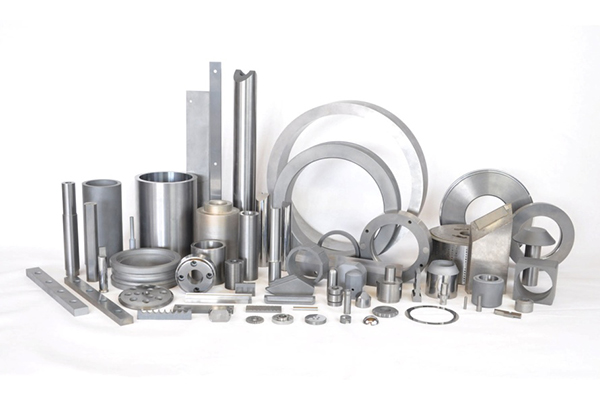Tungsten Heavy Alloys
High density, excellent formability and machinability, outstanding corrosion resistance, high modulus of elasticity, impressive thermal conductivity and low thermal expansion. We present: our tungsten heavy metal alloys.
Our “heavyweights” are used, for example, in the aviation and aerospace industries, medical technology, the automotive and foundry industries or for oil and gas drilling. We briefly present three of these below:
Our tungsten heavy metal alloys W-Ni-Fe and W-Ni-Cu have a particularly high density (17.0 to 18.8 g/cm3) and provide reliable shielding against X-ray and gamma radiation. Both W-Ni-Fe and our non-magnetic material W-Ni-Cu are used for shielding for example in medical application but also in the oil and gas industry. As collimators in radiation therapy equipment they ensure an accurate exposure. In balancing weights we make use of the particularly high density of our tungsten heavy metal alloy. W-Ni-Fe and W-Ni-Cu expand only very little at high temperatures and dissipate heat particularly well. As mold inserts for aluminum foundry work, they can be repeatedly heated and cooled without becoming brittle.
In the Electrical Discharge Machining (EDM) process, metals are machined to an extreme level of precision by means of electrical discharges between the workpiece and electrode. When copper and graphite electrodes are not up to the job, wear-resistant tungsten-copper- electrodes are able to machine even hard metals without difficulty. In plasma spray nozzles for the coating industry, the material properties of tungsten and copper again complement one another perfectly.
Infiltrated metallic tungsten heavy metals consist of two material components. During a two-stage manufacturing process, a porous sintered base is first produced from the component with the higher melting point, for example a refractory metal, before the open pores are then infiltrated with the liquified component with the lower melting point. The properties of the individual components remain unchanged. When inspected under the microscope, the properties of each of the components continue to be evident. At the macroscopic level, however, the properties of the individual components are combined. As a hybrid metallic material, the new material may, for example, possess new thermal conductivity and thermal expansion values.

Liquid phase-sintered tungsten-heavy metals are manufactured from the mixture of metal powders in a single-stage production process during which the components with lower melting points are melted onto those with higher melting points. During the binder phase, these components form alloys with those that have a higher melting point. Even a large amount of the tungsten, which has a high melting point, is dissolved during the binder phase. Plansee’s liquid phase sintered composite materials benefit from the tungsten component’s density, modulus of elasticity and ability to absorb X-ray and gamma radiation without suffering from any of the drawbacks associated with the processing of pure tungsten In contrast, the coefficient of thermal expansion and the thermal and electrical conductivity of the liquid phase-sintered components depend to a very great extent on the composition involved in the binder phase.
Back-cast materials simultaneously combine the material properties of two different material components. During this process, the materials themselves are retained in their original state and are bound only at a thin junction. The metals are fused in a mold to form a bond of only a few micrometers in size. Unlike welding and soldering techniques, this method is particularly stable and ensures optimum thermal conduction.